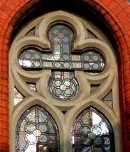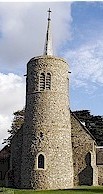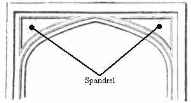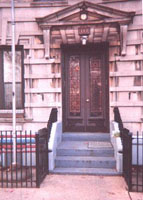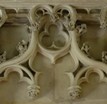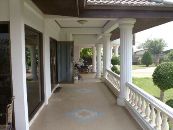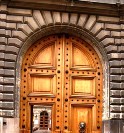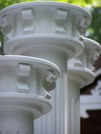pulvinated frieze or pulvino is convex in section. Such friezes were features of 16th-century Northern Mannerism and much used in interior architecture and in furniture.
Is most often found in the Ionic order of Classical decoration. Its surface treatment may be plain or ornately carved.
The architecturaldictionary
Q
The architecturaldictionary
The architecturaldictionary
RETURN- the part of a molding or pattern that continues around a corner.
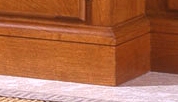
Rise - In stairbuilding it is the vertical distance from one stair tread to the next.
Riser - The vertical portion of a step. The board covering the open space between stair treads.
The architecturaldictionary
Rococo design - 1650 to 1790 during the end of the Baroque period and during the reign of the French king, Louis the 14th. Rococo style rooms were designed as total works of art with elegant and ornate furniture, small sculptures, ornamental mirrors, and tapestry complementing architecture, reliefs, and wall paintings.
Click to enlarge picture.
The architecturaldictionary
Roof Run- The horizontal distance from the outside of a bearing wall plate to the center of the ridge rafter.
Click to enlarge picture.
Roof Pitch - Degree of roof slant stated in inches rise per foot.
The architecturaldictionary
Rosette- Decorative wooden blocks displaying various three dimensional patterns used at the juncture of the side and head casings of doors and windows. Popular in Victorian architecture.
Click to enlarge picture.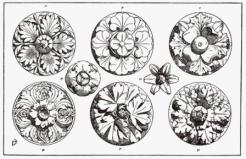
The architecturaldictionary
Rough Opening - When framing it is the opening required to allow doors and windows to be installed.
Rough Sill - When framing it is the the bottom rail of a window rough opening.
The architecturaldictionary
Rubble masonary - Masonry construction using stones of irregular shape and size.
Rusticated Stone masonary - Masonary stonework having the joints deeply sunk and oughly finished.
S
The architecturaldictionary
saltbox - A type of wood-frame building, one-and-a-half or two stories in the front and one story in the rear. The double-pitched roof is short in the front and long in the rear, extending close to the ground.

Sash - The window unit (comprised of rails, stiles, lites, muntins) that fits inside the window frame.
SECOND EMPIRE -a style of architecture where the structure has a mansard roof, usually there are bonneted dormers in the curved section of the roof. It may be extravagantly ornate.
.
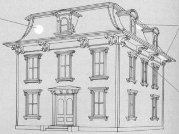
The architecturaldictionary
Scuttle- An opening in the ceiling leading to an unfinished half-story. Often used for any opening to an attic.
Shed - A roof type with one high pitched plane covering the entire structure and is usually attached to an existing structure. One can find many shed structures attached to old barns.
Click to enlarge image.
Sheathing- A covering over the structural frame of a building, onto which the cladding is attached. Typically 1/2"plywood it provides diagonal bracing to stabilize walls as well as a solid foundation for siding.
shutter- Originally an exterior cover for a window used for protection from weather and intruders. Now they are usually decorative on the exterior but interior shutters, usually louvered, are active.
Click to enlarge image.
Sidelights- Windows on either side of a door.
The architecturaldictionary
Siding - The finished covering on the outside of non masonry walls of houses and buildings. Shingles, wood siding, aluminum siding, vinyl siding, stucco, etc.
Slate - A roof material made from slate, a hard, fine-grained, dense stone. It is split into thin sheets from a rock that cleaves into thin, smooth layers.Slates are then cut into small units to attach to roofs.
Click to enlarge image.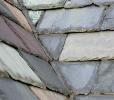
Sleepers- Joist set in concrete to provide nailing strips for flooring.
Smoke Chambers - The are immediately above the damper and smoke shelf of a fireplace in the chimney.
The architecturaldictionary
Smoke Shelf- A shelf at the base of the smoke chamber that provides proper smoke circulation within this chamber above the fireplace in the chimney.
Square-A unit of measure equal to 100 square feet. The 'square foot', and 'square yard' are measurements used by many tradesmen.
squinch-A device by which a round dome or drum is supported on a square or polygonal base. The squinch helps transition the weight of the drum or dome to the walls of the square or polygon. a small arch built across the interior angle of two walls (usually to support a spire)
The architecturaldictionary
Stairwell- The area that is used by a stairway system. Sometimes it may be an enclosed area and sometimes may not.
The architecturaldictionary
String-course- Similar to a belt-course but thinner; a horizontal band or molding marking architectural subdivisions, such as stories- Small metal structures used to hold the shutters against the wall.
Click to enlarge image.
The architecturaldictionary
Structuralism -Structuralism focused on the way that human behavior is determined by various structures.
stylobate-In classical Greek architecture it is the flat pavement, or floor of the building, on which the columns are placed.
strapwork- Decorative work, popular in northern Europe in the 16th and early 17th centuries, consisting of interlacing straplike bands, often used in low relief on ceilings, screens, and panels.
Any type of ornament consisting of narrow fillets or bands that are folded, crossed, or interlaced.
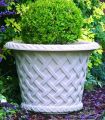
Interlacing decorative bands found within gables; especially found in Tudor architecture and Tudor Revival, as well as in northern Europe.



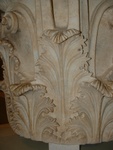 The architecturaldictionary
The architecturaldictionary
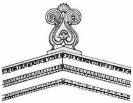 The architecturaldictionary
The architecturaldictionary







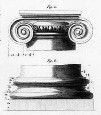
 The architecturaldictionary
The architecturaldictionary
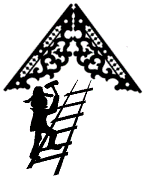
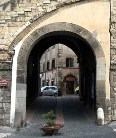

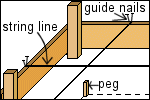

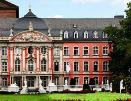

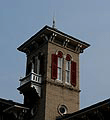
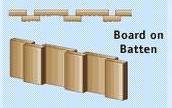
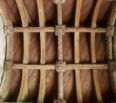
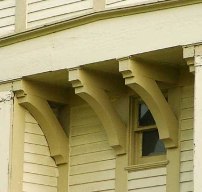

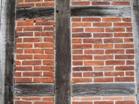



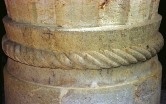
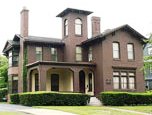
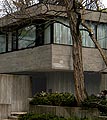
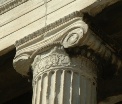
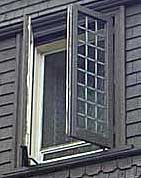

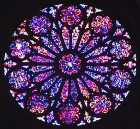



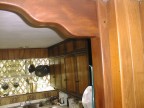

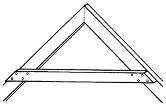

 is the oldest and simplest Greek style--its found on the Parthenon in Athens. This column features fluted sides, a smooth rounded top, or capital, and no separate base.Ionic columns are identified by the scroll-shaped ornaments at the capital, which resemble a ram’s horns.
is the oldest and simplest Greek style--its found on the Parthenon in Athens. This column features fluted sides, a smooth rounded top, or capital, and no separate base.Ionic columns are identified by the scroll-shaped ornaments at the capital, which resemble a ram’s horns.  column rests on a rounded base.Corinthian columns are the latest of the three Greek styles and show the influence of Egyptian columns in their capitals, which are shaped like inverted bells. Capitals are also decorated with olive, laurel, or acanthus leaves.
column rests on a rounded base.Corinthian columns are the latest of the three Greek styles and show the influence of Egyptian columns in their capitals, which are shaped like inverted bells. Capitals are also decorated with olive, laurel, or acanthus leaves.  columns rest on a base similar to that of the Ionic style
columns rest on a base similar to that of the Ionic style
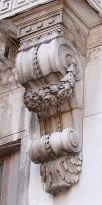
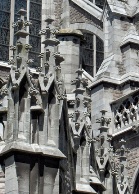
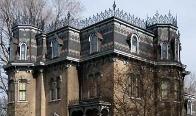
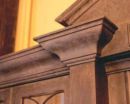



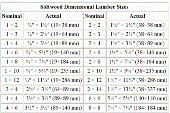



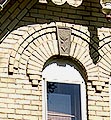

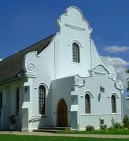

 ie: craftsman bungalows have very wide eaves with decorative brackets.
ie: craftsman bungalows have very wide eaves with decorative brackets.







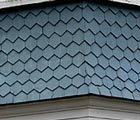


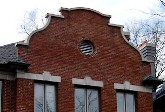
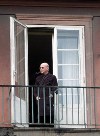

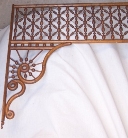
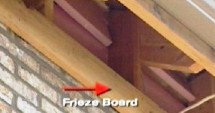
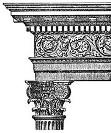

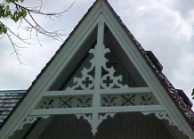 Gable decoration - Also know as Gingerbread it is the decorative woodwork applied under the eaves or at the bargeboard level at the apex of a gable end. Also refers to decorative bargeboards. Also see Valley Craft and Design.
Gable decoration - Also know as Gingerbread it is the decorative woodwork applied under the eaves or at the bargeboard level at the apex of a gable end. Also refers to decorative bargeboards. Also see Valley Craft and Design.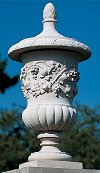


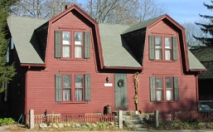
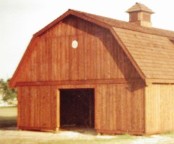
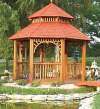





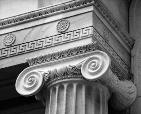
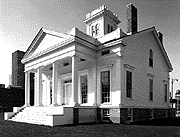


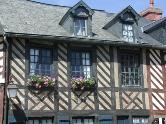
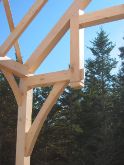




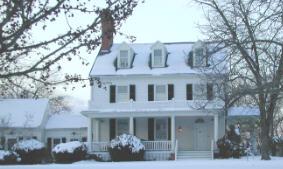

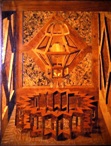




















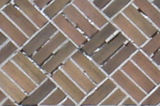 alt="Masonary bond">
alt="Masonary bond">

 (1)An ornamental bracket used in series under a cornice, especially a cornice of the Corinthian, Composite, or Ionic orders.
(2)Blocks or brackets placed in a series on the underside of a cornice. A modillion is a bracket whose horizontal side is longer than the vertical.
(1)An ornamental bracket used in series under a cornice, especially a cornice of the Corinthian, Composite, or Ionic orders.
(2)Blocks or brackets placed in a series on the underside of a cornice. A modillion is a bracket whose horizontal side is longer than the vertical.
 a. A vertical member, as of stone or wood, dividing a window or other opening.
a. A vertical member, as of stone or wood, dividing a window or other opening.
 ">
- A small round or oval window. While oculus is not in common use in English it is the Latin word for eye, and the word remains in use in certain contexts. As the name of the round opening in the top of the dome of the Pantheon in Rome and in reference to other round windows and openings.
">
- A small round or oval window. While oculus is not in common use in English it is the Latin word for eye, and the word remains in use in certain contexts. As the name of the round opening in the top of the dome of the Pantheon in Rome and in reference to other round windows and openings. 
 - a double curve or 'S' curve.
- a double curve or 'S' curve. 
 - projecting or bay window in an upper story, supported on brackets, corbels, or an engaged column, usually curved but can be square. It is most characteristic of the late medieval and early Renaissance period in England, but is also found in France and Germany during the same period. The term is often loosely but incorrectly applied to any bay window.
- projecting or bay window in an upper story, supported on brackets, corbels, or an engaged column, usually curved but can be square. It is most characteristic of the late medieval and early Renaissance period in England, but is also found in France and Germany during the same period. The term is often loosely but incorrectly applied to any bay window.



 The architecturaldictionary
The architecturaldictionary
 Patera A shallow circular decorative element, typically found on walls or at the junction of decorative elements such as ceiling coffers.
Patera A shallow circular decorative element, typically found on walls or at the junction of decorative elements such as ceiling coffers.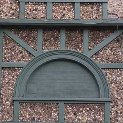
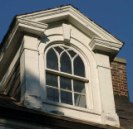
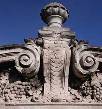

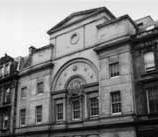
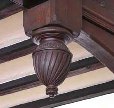
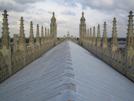
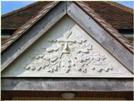
 Pendentives were commonly used in Renaissance and baroque churches, with a drum often inserted between the dome and pendentives.
Pendentives were commonly used in Renaissance and baroque churches, with a drum often inserted between the dome and pendentives.
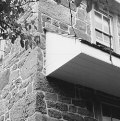

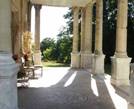
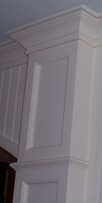
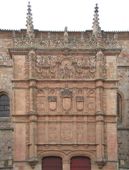 Plateresque -A spanish architectural art form of the 15th - 16th century. The design features etremely ornate appliques and carvings.
Plateresque -A spanish architectural art form of the 15th - 16th century. The design features etremely ornate appliques and carvings. 
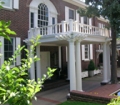 2. A roofed structure covering a driveway at the entrance of a building to provide shelter while entering or leaving a vehicle. Porte-cochères should not be confused with carports in which vehicles are parked; at a porte-cochère the vehicle merely passes through, stopping only for a passenger to alight.
2. A roofed structure covering a driveway at the entrance of a building to provide shelter while entering or leaving a vehicle. Porte-cochères should not be confused with carports in which vehicles are parked; at a porte-cochère the vehicle merely passes through, stopping only for a passenger to alight.

